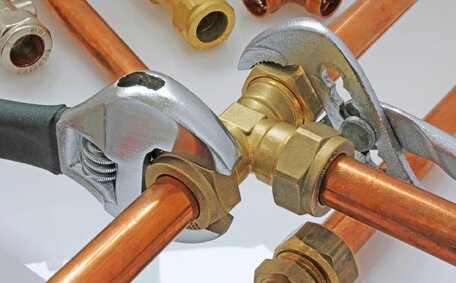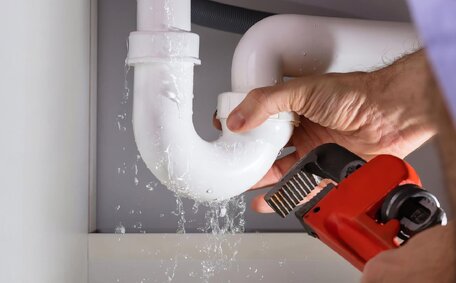Understanding Hot Water System Retrofitting
Enhancing the performance and efficiency of an older hot water system through retrofitting involves upgrading or modifying components to accommodate advanced heat pump technology. The main objectives are to bolster energy efficiency, slash electricity costs, and extend the lifespan of your hot water system.
Multiple retrofit options exist for hot water systems:
- Installing a heat pump, which captures heat from the air and transfers it to water, can substantially lower electricity consumption and boost energy efficiency, as they require less electricity than traditional electric systems.
- Converting to a gas system - Transitioning from an all-electric to a gas-powered system can cut operational costs and modernise an outdated setup.
- Incorporating solar collectors - Integrating solar collectors into your storage system enables the harnessing of solar energy to preheat water throughout the day.
The team at St Ives Plumbing can assist homeowners in retrofitting their gas solar hot water systems and are always ready for you to ask about their extensive experience. Our expertise can guide you in selecting the optimal hot water system upgrades for your home and budget. We often recommend heat pumps, which can reduce water heating bills by more than 50% and provide a continuous hot water supply.
To understand if retrofitting with a water heat pump could benefit you, contact us today to arrange an onsite evaluation of your system and home.
Evaluating Your Current System’s Upgrade Potential
Careful evaluation of your current hot water system’s performance is crucial when considering retrofitting. Our professionals can conduct an on-site assessment to ascertain the viability of upgrading your hot water service.
We will assess the age, make, and model of your existing hot water unit, as undersized systems can deplete hot water supplies prematurely.
Older systems, especially your electric hot water heaters, tend to be less energy efficient, so transitioning to a modern heat pump or solar model can dramatically reduce your energy bills.
Other factors we consider:
- The types of water heaters you possess, such as electric, gas, solar, or heat pump systems.
- Its physical condition.
- Infrastructure requirements for retrofitting e.g., electrical work required, gas lines, solar panels.
- How suitable your home is for upgrades like heat pumps.
Upgrading electric storage or gas hot water systems older than 15 years can result in energy savings of approximately 50%. New heat pump hot system units for hot water are also eligible for government rebates.
Arrange an on-site evaluation with St Ives Plumbing to understand what upgrade options are viable and will deliver the best savings for your home.
Cost Considerations for Retrofitting vs Replacement
When deciding whether to retrofit or replace your hot water systems, cost is a key factor. We will assess the current condition and performance of your system to gauge if upgrades are financially viable or a brand new unit is the better option.
Initial costs are often more modest to retrofit components compatible with your old hot water setup, such as heat pumps or solar collectors. However, retrofitting older systems in poor condition can also lead to ongoing issues and expenses, in contrast to the advantages of a new one. Replacement with a system new ensures optimal reliability and efficiency.
Our pump systems can reduce energy bills by more than 50% and have a potential lifespan of over 20 years. Retrofitting ensures a consistent hot water supply, offering a quicker return on investment and peace of mind through long-term cost reductions from higher efficiency.
We provide no obligation quotes outlining costs between retrofitting, upgrading electric or gas systems, installing heat pumps, adding solar pre-heating, or full replacements tailored to make it your own. Contact St Ives Plumbing to explore all options for installing new hot water enhancements into your home.
Boosting Energy Efficiency
Various methods exist to enhance the energy efficiency of your hot water system via retrofitting:
- Install a heat pump – Heat pumps rank among the most efficient solutions, cutting water heating bills by over 50%. Employing renewable thermal energy from the ambient air, they stand as some of the most efficient alternatives to traditional electric hot water systems. Effective operation of heat pump systems requires installation in locations with appropriate air temperature and ventilation.
- Add solar pre-heating – Solar collectors mounted on your roof can preheat cold water during the day before it enters your hot water tank or heat pump. This reduces the energy input required from your primary heating source.
- Improve insulation – Upgrading insulation for your heating cooling systems around your pipes and fitting a greenhouse-approved insulating jacket around your storage water cylinder reduces standby heat losses, saving energy.
- Timer and temperature controls – Smart controls enable you to set the optimum hours day for maximum solar gain and advantageous off-peak electricity tariff, optimising your water storage heating. Lowering your thermostat temperature also saves energy.
Our experts at St Ives Plumbing Pty Ltd can navigate you through retrofit options that optimize energy savings, customized for your system, usage patterns, and financial plan. Upgrading gas or electric storage units that are more than 15 years old can reduce water heating costs by 50% or more.
To discuss improving your hot water efficiency through retrofitting, email or call our friendly team today.
Installation Process for Retrofits
The installation process for retrofitting your hot water system depends on the type of upgrade:
Heat Pump
Our team will:
- Place the outdoor heat pump unit in a location with ample ventilation.
- We place the heat pump’s water tank close to your home’s existing connections to effectively manage water, electricity, and, if necessary, gas supply.
- Fit isolation valves to facilitate straightforward servicing.
- Connect the refrigerant lines between the outdoor unit and the tank.
- Integrate smart controls for intelligent heating based on solar gain and electricity prices.
Heat pumps feature plug-and-play connections for an uncomplicated retrofit to your existing system.
Solar Preheating
Installing solar collectors for pump hot water systems involves:
- Mounting panels on a north-facing section of roof for your solar hot water system.
- Connecting the collectors into the existing hot water piping.
- Adding a solar storage tank if your current cylinder is unsuitable.
- Integrating a pump station and controller.
Solar collectors need roof access and space for a storage hot water heat pump tank. Retrofitting collectors to existing systems like heat pumps enables self-sufficient water heating through renewable solar hot water systems during sunlight hours.
Ensuring Longevity and Performance After Retrofitting
Follow these maintenance tips from St Ives Plumbing to ensure your retrofitted hot water system operates efficiently for years:
Regular Servicing
Schedule professional maintenance every 6 to 12 months to ensure optimal performance and evaluate the efficiency of solar heating components. We inspect components like pump water heaters, solar collectors, thermostats, heating elements, anodes and insulation for wear and efficiency. Proactive maintenance prevents issues emerging.
Descaling
Mineral buildup from hard water can impair heating efficiency, leading to inflated energy bills and increased hot water consumption. Our qualified plumbers can descale your hot water system with eco-friendly products that maintain energy efficiency and restore system performance.
Leak Checks
Minor leaks lead to water wastage and higher energy costs, undermining efficient resource management in your home. During servicing, we rigorously check for leaks, inspecting joints, valves, pipes, and connections for integrity.
Adjust Thermostat Settings
Lowering your thermostat temperature saves energy and reduces water usage while still providing comfortably new water temperature settings for most uses. Smart controls allow greater precision in optimising hot water availability and efficiency.
Modify Usage Patterns
Stagger your heat pump usage to match solar gain. Schedule heat pump or electric boosting to cheaper off-peak times if possible. Installing flow restrictors complements your heat pump system and helps conserve hot water.
Maximize your investment with a new system that St Ives Plumbing can supply and install, while also providing ongoing maintenance support. Call or email to book your next service.
Compatibility Considerations
Ensuring compatibility with your current setup and infrastructure is crucial when retrofitting a hot water system. To safeguard against potential issues, make sure you seek professional advice.
Our plumbing team will assess PV system compatibility in areas including:
- Your current system type (electric, gas, solar etc.) and model
- Age and condition of tanks, pipes and connections
- Available space for additional components
- Ventilation needs e.g. for heat pump outdoor units
- Your home’s roof type and orientation for solar panels
- Electrical load capacity and circuits for new heating units
- Town planning and strata regulations in your council area
We also take into account your future energy usage goals and aspirations. Upgrades should align with longer term goals like installing a solar PV system or batteries, integrating smart hot water controls, and transitioning to renewable energy sources.
As your local Sydney plumbers, St Ives Plumbing guide you through every aspect of compatibility to create the optimal, tailored solution for retrofitting your hot water system. Contact us or call 1300 349 338 to discuss your retrofit options.






